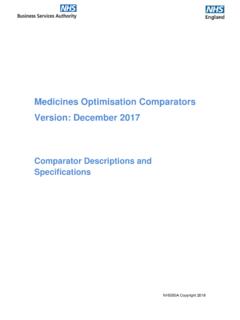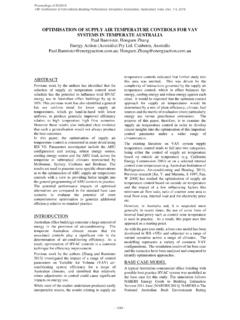Transcription of Indirect Procurement Optimisation - EY - United …
1 Indirect Procurement OptimisationUnlocking areas of savingsand value creation1 Are there still opportunities to cut costs?According to a recent survey EY took part in, of the 267 Chief Procurement Offi cers and other Procurement executives contacted, 65% cite fi nding more savings as their top pressure1. With persistent high infl ation in many emerging markets, fi nding new ways to contain costs is a constant challenge. The fi nancial sector provides a pertinent example. Compensation costs have declined as a proportion of revenue for the top 50 global banks in 2013 (from 33% in 2009 to 30% in 2013), however, non-staff costs have continued to rise faster than revenues2. South African banks have struggled to contain cost growth in line with much slower revenue fl ows since the global fi nancial crisis.
2 Both compensation and non-staff costs for the banking sector have consistently outpaced infl ation during the past fi ve years. As a result, effi ciency ratios rose considerably, from in 2008 to in 2012. This is not unique to the banking sector. 75% of Consumer Products executives EY surveyed globally believe it has been harder to sustain their operating margins over the past three years3. Non-compensation or Indirect costs are all other costs (such as utilities, logistics and IT spending) that an organisation incurs before they pay salaries and bonuses. The global economic scenario is now forcing companies to reduce costs on a sustained basis to improve bottom-line profi ts. Although Indirect Procurement costs are sometimes considered as fi xed and much more infl exible than salaries and bonuses to manage, they are one of the few areas in an organisation that still provides ample opportunities to reduce costs and improve bottom-line profi ts.
3 The key to a sustainable reduction in Indirect spend is to strike the right balance of focus between supply and demand activities in an organisation. Considering the opportunity levers below for both demand and supply will assist organisations in identifying signifi cant savings in a structured Expenses ZAR bn1 Ardent Partners, CPO Rising 2012: Keeping Score, 7 Dec 20122 Global Banking Outlook 2014-153EY, Margin Unlocked: Integrated margin management to deliver breakthrough performance2 Sometimes when I consider what tremendous consequences come from little things, I am tempted to think there are no little things. Bruce Fairchild Barton, American authorOpportunity levers for both demand and supply will help organisations identify signifi cant savings in a structured wayIndirect Procurement costs are often considered as insignifi cant.
4 Organisations therefore underestimate the infl uence on the bottom line that the failure to control Indirect spend cost, terms and conditions, supplier performance specifi cations and performance management have on the bottom line. Estimates are that even a fi ve percent reduction in Indirect spend can translate to a one to three percent impact on the bottom should be aware of and address the factors which could result in them overlooking a golden opportunity to optimise Indirect spend to cut costs. These factors can be summarised in the three categories below:Number of stakeholders and a highly complex area to manage:The diversity of materials and services that fall within the Indirect Procurement category, the multiple channels through which they are procured, and the number of stakeholders involved often results in Indirect Procurement being a highly complicated area to manage.
5 This complexity is frequently seen as a barrier for companies that want to achieve quick-wins in cost saving buying, lack of a centralised supply chain and meaningful data:Generally, organisations do not have a Procurement area dedicated to Indirect spend. This results in sporadic buying patterns, lack of preferred suppliers and a number of challenges such as a lack of meaningful data, fragmented supply chains, and embedded local personal relationships with spend is therefore seen as a low-value and low-risk area to manage, and the potential cost savings are overlooked by of measured Savings:Companies usually have key suppliers for direct spend with whom they have powerful relationships and leverage volume buying to negotiate discounts and cost savings.
6 If Procurement negotiate discounts and cost savings in the area of direct spend the impact on profi t and loss is suppliers are not restricted as to which industries they can supply. It is therefore only on rare occasions that a company can use its volume buying power to attain a dominant position over an Indirect supplier. Companies have to look for more innovate ways to improve their Indirect spend portfolio by consolidating, standardizing and outsourcing Indirect items of spend to reduce costs and raise service fact that cost savings for Indirect Procurement are not linked to a specifi c bill of materials as with direct Procurement results in the impact of cost savings in Indirect Procurement being underestimated by to alter the way in which business is transacted in a specifi c spending categoryValue for money opportunities in a specifi c spending category3Is it worth the effort to optimise Indirect spend?
7 Optimising Indirect spend has the saving potential of up to 25% on current costs as indicated in the example in Table 1 and 2 below:Demand driven Indirect Procurement cost saving matrix Cost CategoriesExample of Indirect Procurement categoriesOpportunity Lever and examples of saving areas that can be addressed with Indirect Procurement optimisationTypical Savings RangeIT and depreciation: 17% of total costHardware: Computer equipment1. Eliminate demand: Rationalisation to one laptop and desktop Challenge organisation on what add-ons and option packages are really needed5. Encourage re-use Re-use laptops for new employees7. Reduce portfolio range and complexity Reduce specifi cations (no DVD player, etc.)
8 5-25%Software: Software licensing and maintenance2. Review volume required: Per user versus software licensing Analyse the usage of organisation s softwareOther: 15% of total costsOffi ce Management: Courier services Business printing services Archiving/record management Offi ce furniture Promotional products Mail products and services4. Consider alternative ways of fi lling needs: Restrict utilisation of an overnight courier and express services to urgent matters5. Encourage re-use Encourage reuse of furniture6. Simplify and /or standardise products/service specifi cations Products rationalisation (50 items catalogue)15 20%Travel: Car rental Travel agency Corporate travel cards Airfare Lodging4.
9 Consider alternative ways of fi lling needs: Economy class for fl ights <6 hours Consider lower cost options like video, web and telephone conferences instead of face to face meetings Premises: 11% of total costsUtilities: Electricity4. Consider alternative ways of fi lling needs Issue laptops and notebooks which use up to 90% less energy than a desktop PC. Energy saving measures: It is estimated that organisations can save as much as 75% of energy costs by making the switch from traditional incandescent light bulbs to energy-effi cient Compact Fluorescent Light (CFL) bulbs. 9 16%Source: EY experience. Illustrative (not exhaustive)4 Cost CategoriesExample of Indirect Procurement categoriesOpportunity Lever and examples of saving areas that can be addressed with Indirect Procurement optimisationTypical Savings RangeIT and depreciation: 17% of total costHardware: Computer equipment7.
10 Rationalise supply base: Optimise hardware by taking licence requirements into consideration when buying : Software licensing and maintenance1. Consolidate spend: Eliminate duplicate licensing through identifying the software that is included in the licences the organisation has paid Renegotiate existing contracts: Identify whether the organisation actually uses all features that are paid for. Renegotiate the contract to receive and pay only for software editions that are : 15% of total costsOffi ce Management: Courier services Business printing services Offi ce furniture Promotional products Mail products and services7. Rationalise supply base: Control purchasing processes by utilising preferred vendors and leverage supplier relationships where possible to ensure the organisation gets the best price.















